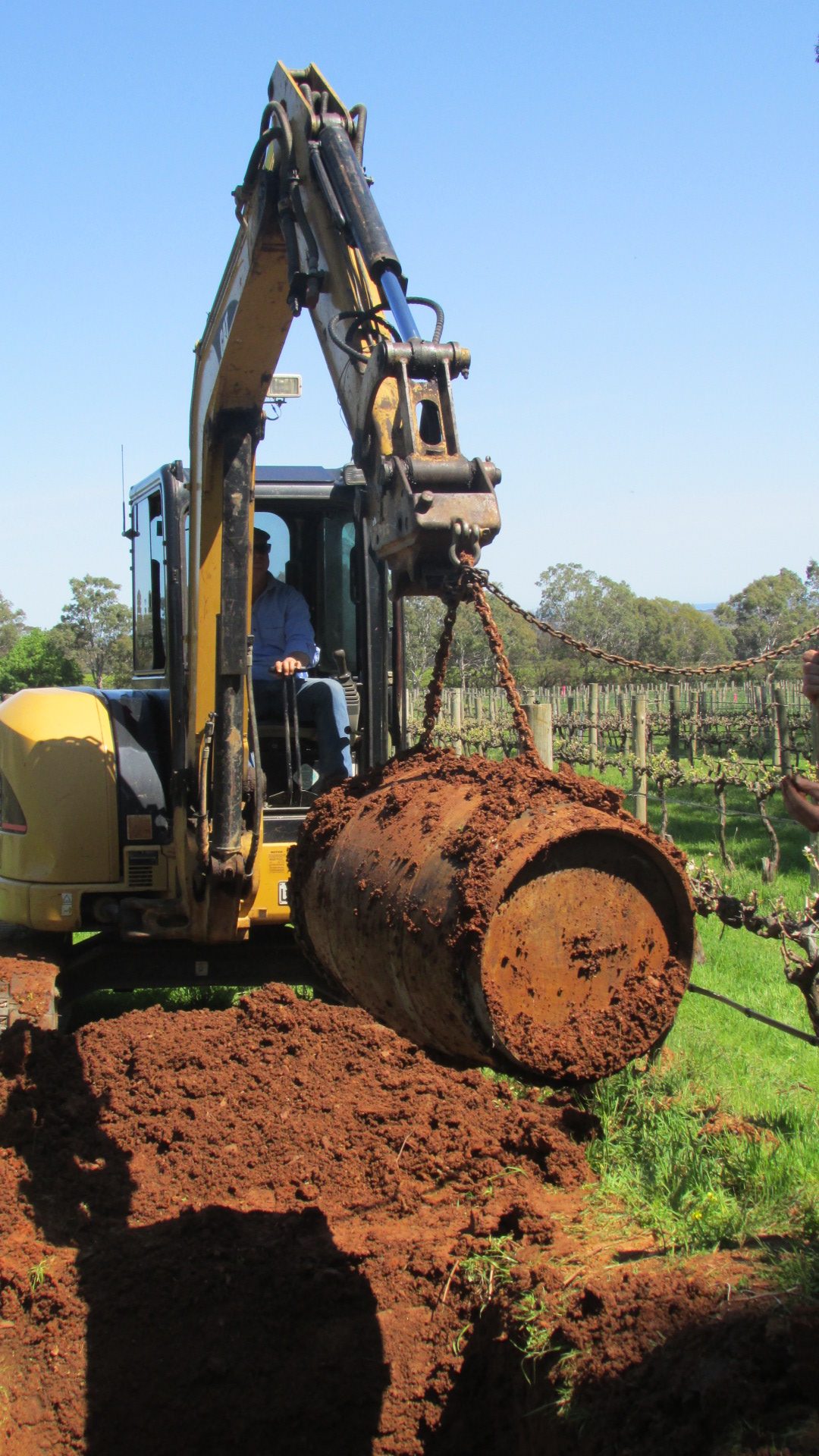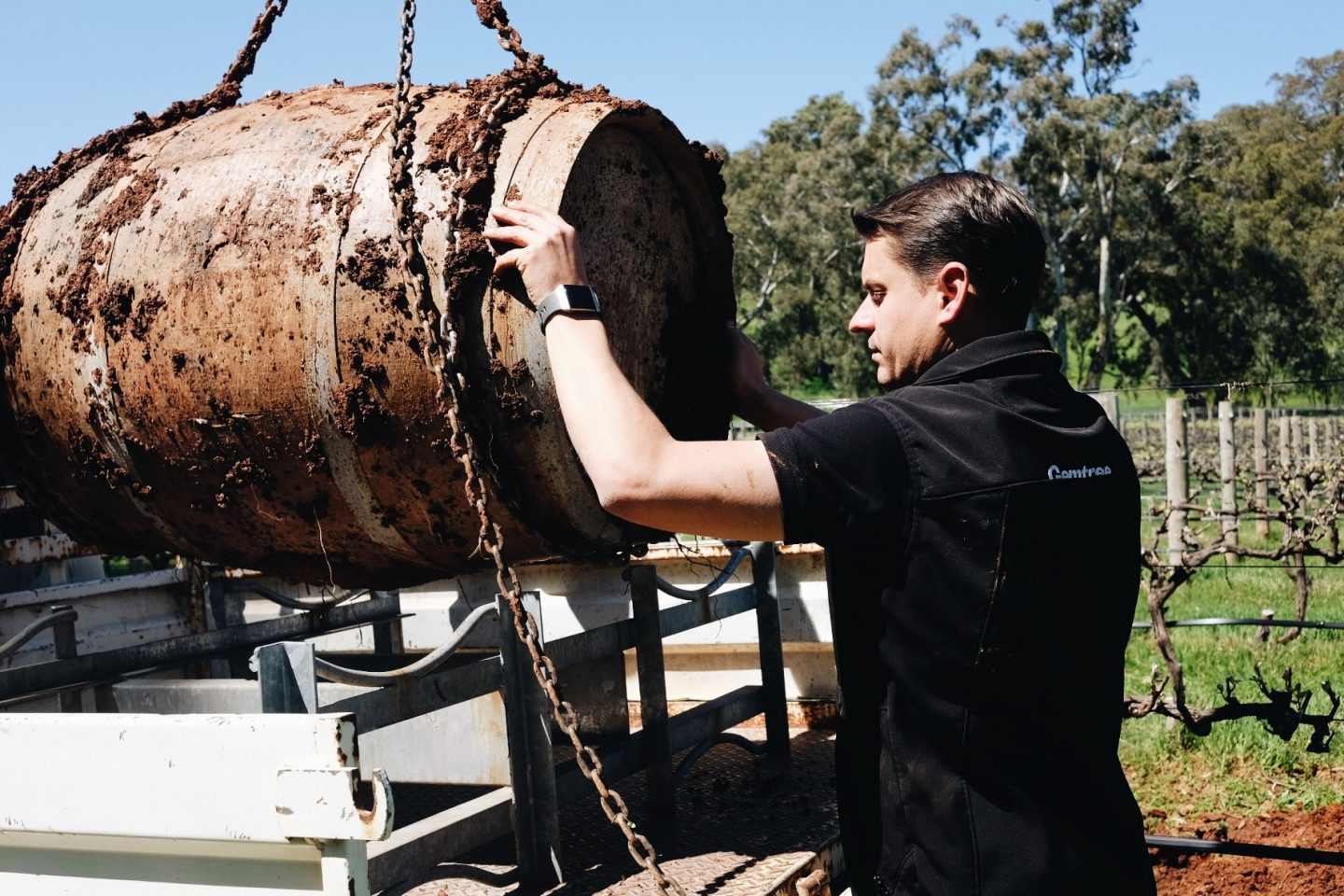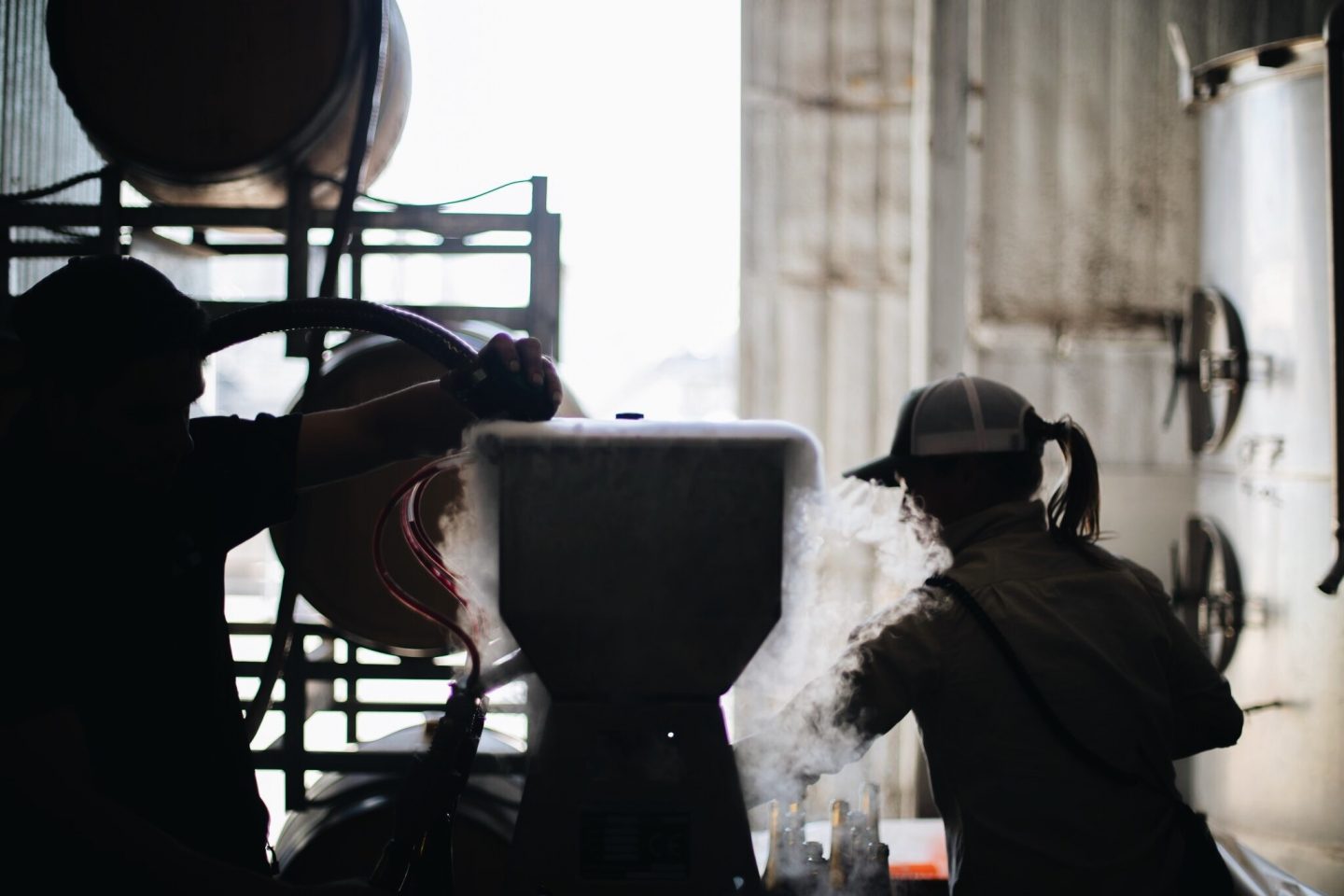Hauled by a chain from deep beneath the rich, red, loamy earth
comes a barrel of shiraz, and into the glass comes a splash of wine that hasn’t
seen oxygen since the moment its fermentation finished six months earlier.
Brilliant purple in colour, its heady perfume of blueberries, bay leaf and a
hint of eucalyptus frames a bright palate that exudes vitality. Gemtree’s
genial giant winemaker Mike Brown breaks into a big, broad smile, satisfied
that his hunch about this radical terroir experiment had proved right. Subterra
2019 Shiraz was a success.
There’s significant risk in burying – then
ignoring for six months – a barrel 2.5 metres beneath the surface of the
McLaren Flat vineyard where its grapes were grown. This is the fourth year that
Brown and the Gemtree crew have buried a barrel for the duration of its
maturation, but the first time they’ve felt confident enough to unearth and
test it before a small crowd. “There’s no faking this,” Brown mutters as a
ditch digger starts ripping into the topsoil, searching for the barrel between
two of five grapevine rows that produced the half-tonne of grapes for this
project.

So why gamble on such an unusual experiment? “It closes the circle
on our biodynamic story – of the earth, from the earth,” says Brown. Gemtree
has been a certified organic operation since 2011 and is committed to
biodynamic viticulture practices. “It makes perfect sense to me for the wine to
mature underground – compaction, protection, preservation. It’s also another
part of our continuing journey to challenge the thought processes of winemaking
and grape growing, to see whether there is a better way to be doing things.”
The Subterra project was inspired by Burgundian winemakers’
ongoing pursuit of terroir expression through the studied focus of specific
elite sites. Brown wondered with his Gemtree winemaking counterpart Josh
Waechter how they could reach for their own true expression of wine purity, and
struck upon the idea of returning the finished wine to the earth from where it
came.
So, they picked a site that Gemtree viticulturist (and Mike’s
wife) Melissa Brown calls the Stage 2 vineyard – rich and fertile magic dirt,
flanked by towering old gum trees and a running creek, its flaming
rust-coloured loam flecked with ironstone and pebbles. Choosing this vineyard
is significant, as Melissa has transformed it over the past decade, from a
workhorse producing maximum tonnage to an elite shiraz site, having removed
more than half the vines that were originally densely planted.

After hand-picking the grapes from here, they embarked on a 100 per
cent natural winemaking process; using only free-run juice to avoid unnecessary
extraction, no added yeast, no sulphur at any stage. They sealed it in a
five-year-old wax-coated French oak hogshead that had housed previous vintages
of Gemtree shiraz, which Waechter marked with a few astral runes, as a nod to
their biodynamic practices and as a good luck measure. And they concealed the
barrel deep in the earth to ensure temperature variation did not affect the
wine. This proved correct – although significant evaporation still occurred
over the six months, for which Brown has no clear explanation, especially with
such an old barrel.
In the glass, the wine captures the type of absolute freshness
that Brown says only winemakers usually have the privilege of savouring in the
instant before bottling. And as soon as air hits the 2019 Subterra, the wine
begins to blossom in the glass, the transformative process like a fast-moving
train as heady aromas and bright flavours keep shifting to reveal ever more
depth and complexity.
Comparing it to a sample of the same wine from the 2019 vintage
that had been stored in the Gemtree winery in a similar oak barrel, significant
differences are noticeable. Mike Brown sees more oak influence in the winery
barrel, versus greater natural fruit expression in the Subterra wine.
So, what has the Gemtree team learned? That minimal oxygen,
minimal handling of the wine and its fast transfer into barrel after
fermentation leads to fresher, more vibrant and expressive wine. They capture
this by committing wine from the Subterra barrel to glass bottles within an
hour of unearthing (sealed under screw cap), then storing it for 12 months
before releasing the batch for sale. The 2018 Subterra shiraz is released on
November 1 – only 240 bottles, selling for $250 each.

“We’ve preserved the true character of this wine,” says Mike
Brown. “There is a layer of texture and energy around the fruit in the glass –
something beyond the ordinary in wine – and we are absolutely in love with the
result.”
Brown admits that Gemtree’s first attempt at Subterra maturation in 2016 was a failure, but now they’re emboldened to keep going. Three sites have been trialled – with one barrel still buried near the winery after 15 months, and likely to remain underground a while longer to test the limits of this idea – but the Stage 2 vineyard will be an ongoing location for this experiment. “It will only ever be on a small scale,” says Brown, “but I can’t see anything other than good things happening to this wine.”
gemtreewines.com
Get the latest from The Adelaide Review in your inbox
Get the latest from The Adelaide Review in your inbox